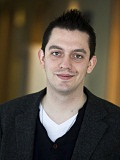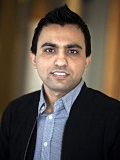The simulator which will ensure the supply of electricity to Sweden
In the aftermath of the storm Gudrun, it was estimated that 730,000 Swedish electricity customers were without electricity when around 30,000 km of electric cables were damaged, of which, nine per cent were damaged so badly that a complete rebuild was necessary. Twenty days after the storm, 12,000 customers were still without electricity and for some subscribers, the interruption lasted for a total of 45 days. KTH researchers have now developed a simulator that will eliminate power cuts.
Imagine an electricity grid that can predict how to deal with for example a storm or other natural disasters. The supply of electricity would be much more secure when rapid changes made to the system could prevent the system from collapsing.
This is actually already a reality and what the unique real-time simulator at KTH is designed to do.
The real-simulator, SmarTSlab (Smart Transmission Systems Laboratory), has just been inaugurated at KTH. This apparatus can simulate an electricity grid the size of Gotland, or bigger if the need arises. The simulator will accept the addition of various factors, such as wind power, local residents charging their electric cars and so on – to see how it affects the system. At the same time, it is possible to integrate all the IT and control systems required by a modern electricity grid.
The advantage of the simulator, compared with traditional estimates, is that you can connect real control systems to it. In this way, you can control the reliability of the entire system and that the measured values are exact. You can also study for example what happens if the system is exposed to an attack or a natural disaster.
In an electricity grid, some power lines are more vulnerable than others, for example because they are carrying greater electrical loads. By providing the simulator with an overview of the entire system, it also knows what measures, alternative routes, which need to be taken to ensure an uninterrupted electricity supply during for example a storm.

Luigi Vanfretti, assistant professor at KTH who is concentrating his work on the transmission system: “This allows us to develop a control system that ultimately provides greater reliability and a secure supply of electricity to our homes and industries. Via computers, the system controls, measures and regulates energy production and consumption," says Luigi Vanfretti.
He builds and develops automatic control models, which include measuring power flows, in order to determine risk factors that must be prevented. After that, his colleague Arshad Saleem, research assistant at the Department of Industrial Control Systems, converts the algorithms in a computer program to analyse and process the measurements so that the system is able to make the right decision.

"Future electricity markets require an intelligent control system, so that we can use alternative energy sources in a smart and safe way," explains Arshad Saleem.
Never before, at least not according to KTH researchers, have tests been carried out of the entire process within the transmission industry. With the real-time simulator, the research team can overview the system from all perspectives. This is partly due to the fact that the simulator is a hybrid system consisting of many different elements, but above all, that cooperation has begun within the various fields.
"With the simulator, we hope to be able to develop tools such as algorithms which by using high-speed communications and GPS synchronization can alert us when there are problems in the system, and which at the same time can generate control and safety measures," says Arshad Saleem.
For more information, contact Luigi Vanfretti on 08-790 62 93 or luigi.vanfretti@ee.kth.se.
Peter Larsson

